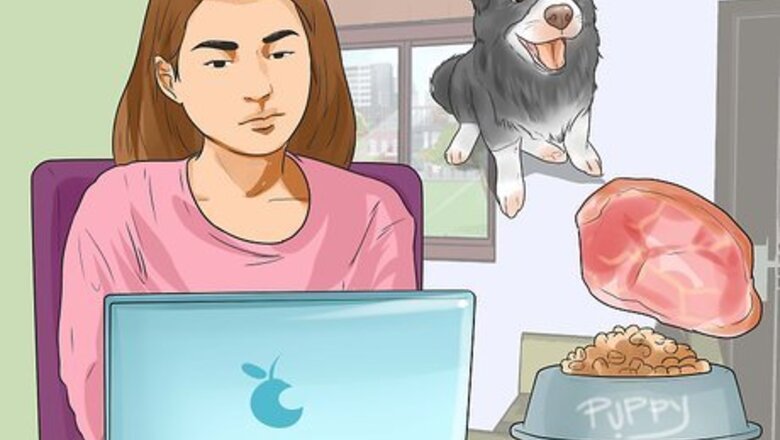
views
Choosing the Best Food for Your Puppies
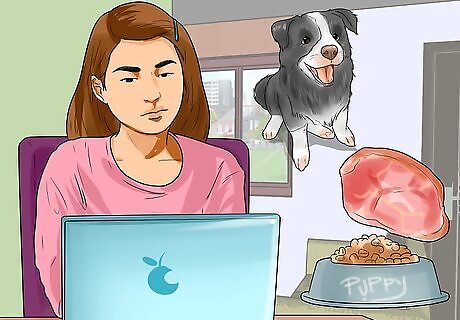
Learn about a puppy’s nutritional needs. Puppies have a lot of growing to do, so their bodies require more calcium, protein, and calories than an adult dog. Therefore, it is essential to feed your puppy food that is meant for puppies and identified on the label as food for "Growth". It is difficult to provide a balanced homemade diet for puppies, because they have such specific nutritional requirements and must have the correct balance of calcium and phosphorus in their food. The calcium to phosphorus ratio in puppy food needs to be within the range of 1:1 to 1:5 to help the puppy develop strong bones and teeth. Getting the ratio wrong at a young age means the puppy may have irreparable damage to their adult teeth, and may also have stunted bone growth.
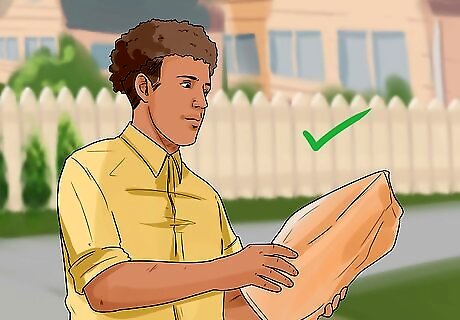
Choose a brand of dog food that uses high-quality ingredients. The first ingredients on the list should be a meat protein like “chicken” or “beef’ and not a grain like “corn” or “wheat.” The caloric content of the food is often found on the manufacturer’s website and not on the bag. There will be information on the protein, fat and fiber in the nutrient analysis section. Most puppies are fed a diet in the mid 20 to 30% protein range.[8] When it comes to choosing any food, make sure you look at the list of ingredients. If it contains chemicals and ingredients you can't pronounce, don't give it to your puppy. Labelling regulations mean the contents are listed in order of quantity. Thus look for high quality ingredients, such as meat. The type of meat should be listed such as "Beef" or "Chicken" etc. Be wary of "meat meal" because this means meat by-products such as offal or skin and is lower quality.

Use a body condition scoring system (BCS). A BCS will help you determine whether your puppy or adult dog is at a healthy weight. A dog that is neither under nor overweight will have ribs that are not visible, but easily palpated with the flat of your hand. It will also have a nice waist just in front of the hips and a flank tuck when viewed from the side.
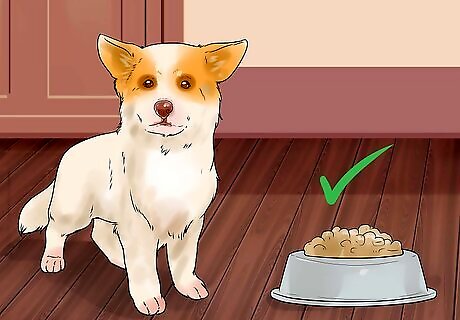
Provide the right amount of food. The amount of food that you feed a puppy has an impact on its lifespan. Puppies that are overweight in their first year of life may potentially die 2 - 3 years ahead of their lean littermates.Use the suggested feeding quantities on your puppy's food package as a starting point, but then assess your puppy's body score on a weekly basis. Each puppy is different and so the amount of food you need to feed them is very different. The amount you give the puppy is dependent on how many calories it needs to stay at a healthy weight and size. Adjust your puppy's food up or down by small amounts (such as 5 - 10 %) when you need to make changes. This fine tuning helps to prevent the puppy's weight from see-sawing up and down.
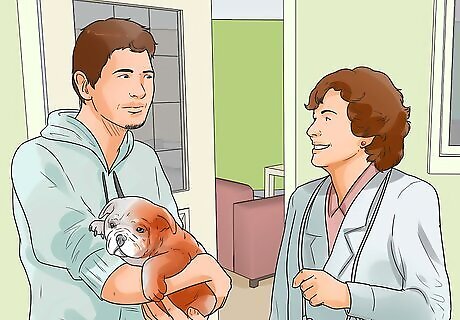
Talk to your veterinarian. If you want to make sure that you are feeding your puppy the right type and amount of food, talk to your veterinarian. The dog food bag may offer some guidelines, but it is impossible for the dog food manufacturer to be able to tailor their recommendations for each individual dog. Your veterinarian may be able to make a recommendation based on your puppy’s specific needs.
Introducing Your Puppies to Food
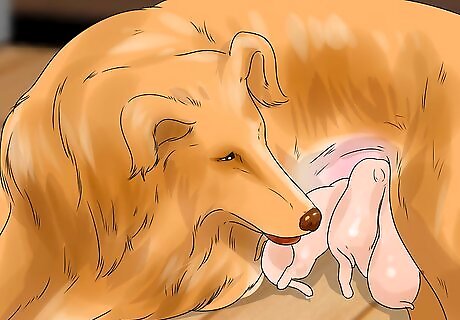
Let your puppies nurse for the first four weeks. The milk the puppy's mother produces contains the exact combination of nutrients it needs to grow healthy and strong. It should make up the entire diet for the first four weeks after birth. If you actually bred the litter and have the puppies and the mother dog, the introduction of “dog food” typically starts around one month of age. If you try to wean the puppy too early, his health will be compromised. If possible, let your puppies watch their mother eating. Puppies like to copy and they will understand what to do much better by following her example.
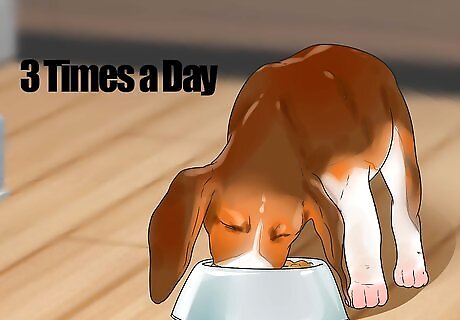
Introduce small quantities of puppy food at four weeks of age. Puppy kibble provided three to four times per day will allow the puppies to start investigating and ingesting the new food. Soak the kibble in water or puppy formula. The puppies will start licking and eating the new food as they become more familiar with the taste and new texture. The puppies will also walk through the food and make a mess. You will need to keep on top of keeping things clean. Make sure the new food is designed for puppies.
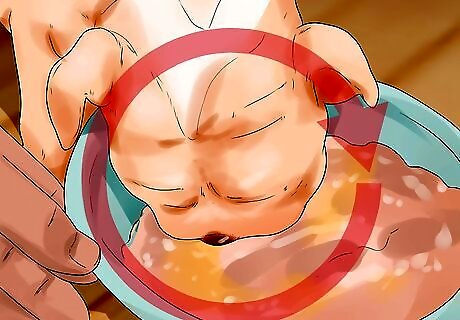
Be consistent with the type of food you give your puppy. If you are bringing home a new puppy, stick with the same brand your puppy was fed by the previous owner for a few weeks before deciding to change to a different food. Food changes should be done gradually over a week or two to prevent stomach upset and possible diarrhea. Add in small amounts (about 10%) of new food to the old diet until you reach 100% new food. Unless your veterinarian recommends an abrupt change in diet, take your time.

Feed your puppy his special food and nothing else. It might be tempting to give your puppy enticing foods like bacon or ham from the table, but do not get into the habit of doing this. Table scraps will often make your puppy vomit or give him diarrhea. Giving your puppy table scraps may also lead to obesity and even pancreatitis. Bear in mind that the more people food you give your puppy, the more he'll want, so it can interfere with training and even cause behavior problems. Consult your veterinarian about dog safe supplemental feeding. Low fat options include vegetables (green beans, carrots, broccoli, etc.) or tofu or skinless chicken breast. Remember, everything in moderation and you have to be cautious of creating a picky eater.
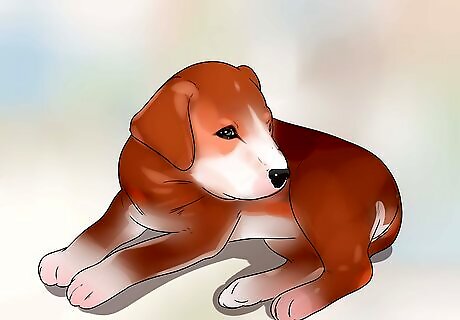
Watch for the signs of low blood sugar in small breeds. Toy and miniature breed puppies are predisposed to low blood sugar (hypoglycemia). In extremely rare instances, the puppy's blood sugar can drop and the puppy will be lethargic. In severe cases, the puppy can start having seizures. This is an emergency and you need to take your puppy to the veterinarian immediately. You can try rubbing Karo syrup on the gums to help, but still take your puppy to your veterinarian. Providing access to food all the time or every 3-4 hours for the first 6 months of life for toy breed puppies will help prevent dietary based hypoglycemia. For larger breed puppies, feeding three times per day is generally sufficient.
Starting and Maintaining a Feeding Schedule
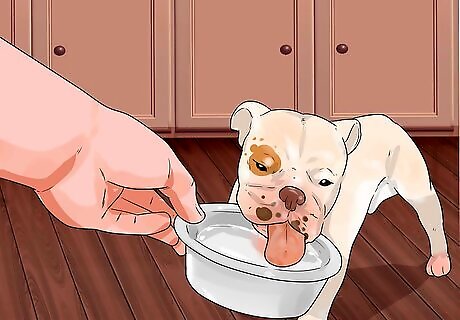
Provide fresh water with your puppy's food. Fresh water should be provided for your puppy at all times; there's no need for a schedule. Refill your puppy’s water dish often and wash it out once per day to keep it clean. Bring a bottle of water and a collapsible dish with you when you travel.
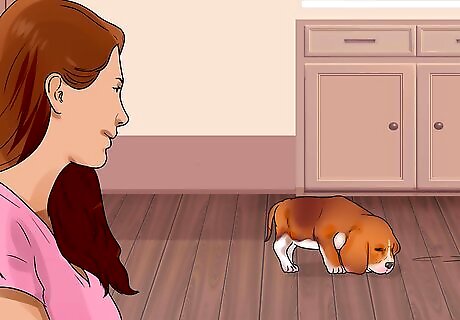
Set aside a quiet area for your puppy to eat. Puppies need a quiet area to eat their food. Make sure that your puppy has a nice quiet space to eat and prevent other animals from getting to your puppy's food bowl. If your puppy feels threatened while eating, he may start guarding his food bowl. This resource guarding behavior can escalate and become dangerous to you and others. Try placing your puppy's food and water bowls in a quiet corner of your kitchen or at the end of a hallway. Make sure that your puppy can access his food and water bowls with ease.
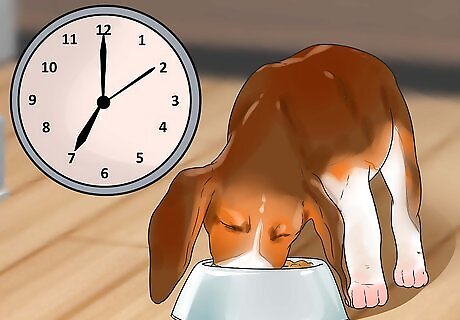
Feed your puppy at the same time every day. Puppies are like babies in that they like to stick to a schedule. Meal feeding also helps with house training, since the puppy will need to relieve itself on a schedule. Bear in mind that a puppy has a small stomach and he cannot take in his calorie requirements for the day in two large meals. However, as he grows his stomach expands relative to his frame and he can cope with larger, less frequent meals. If your puppy is under 3 months of age, then feed him 4 meals a day. If your puppy is between 3 - 6 months of age, then feed him 3 meals a day (4 for toy breeds). If your puppy is 6 months or over, feed him 2 meals a day.
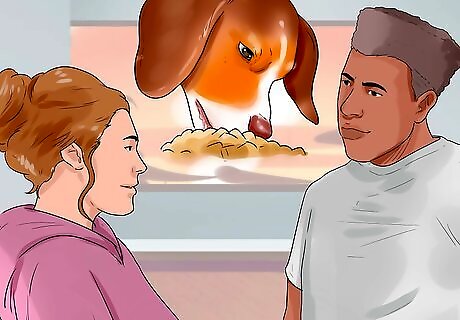
Make arrangements if you will not be home to feed your puppy. If you are often not home during the day, you'll need a way to feed your puppy while you are gone. For example, you could come home at lunch or arrange for a neighbor to feed your puppy in the middle of the day. You can also purchase feeders that operate on a timer that will make food available at certain times during the day. This schedule will only be for a few months, then you can feed morning and night when your puppy is older.
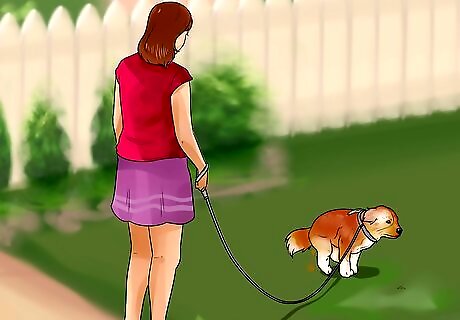
Take your puppy to his potty place after he finishes eating. Most puppies need to eliminate 15-20 minutes after eating a meal, so it is a good idea to get into the habit of taking your puppy to go potty right after he finishes eating. Doing so will help prevent accidents in the house and teach your puppy good bathroom habits.



















Comments
0 comment